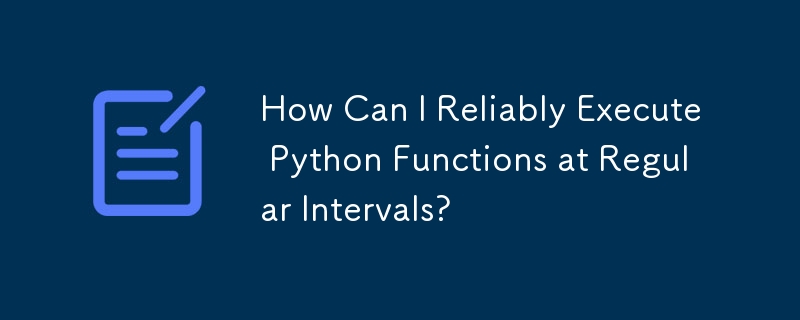
在 Python 中定期執行函數
以指定的時間間隔重複執行函數是程式設計中的常見任務。 Python 提供了多種方法來實現這一點,其中之一就是 time 模組。然而,問題中提到的簡單 while 循環方法可能會面臨一些意想不到的挑戰。
While 循環方法的潛在問題:
while 循環程式碼有效地暫停了每次迭代程式設計 60 秒。如果正在執行的函數需要立即執行,這可能會導致問題。例如,如果函數處理即時數據,60 秒的延遲可能會導致大量數據積壓。
替代方法:使用 sched 模組
As作為 while 循環的替代方案,sched 模組提供了更強大的事件調度機制。使用方法如下:
import sched, time
# Define the callback function
def do_something(scheduler):
# Schedule the next call
scheduler.enter(60, 1, do_something, (scheduler,))
print("Doing stuff...")
# Execute the actual task
# Create a scheduler
scheduler = sched.scheduler(time.time, time.sleep)
# Schedule the first call
scheduler.enter(60, 1, do_something, (scheduler,))
# Run the event loop
scheduler.run()在這個方法中,do_something 函數計畫每 60 秒執行一次。 Scheduler.enter() 方法以延遲 60 秒、優先權為 1 的方式調度函數,確保它盡快執行,而不會阻塞其他事件。
使用現有事件循環庫
如果您的應用程式已經使用了事件循環庫,例如asyncio 或tkinter,您可以利用其內建調度功能而不是使用sched 模組。這確保了與您現有的事件循環機制的兼容性並避免潛在的衝突。
以上是如何定期可靠地執行 Python 函數?的詳細內容。更多資訊請關注PHP中文網其他相關文章!




